Erodium circutarium, Geranium carolinianum: Two Bills You Want to Get
Stork’s Bill is one of those little plants that’s not supposed to grow locally but does here and there. Native to the Mediterranean area, it came here with the Spaniards and later proliferated with the planting of alfalfa, whose fields it likes to inhabit. Now it’s naturalized throughout North America. In northern states and Canada. It’s an annual. In southern and southwest states, a biennial. It is particularly common in deserts and arid grasslands. Colorado calls it a noxious weed.
Scientifically Stork’s Bill is called Erodium cicutarium (er-OH-dee-um sik-yoo-TARE-ee-um.) Erodium is from the Greek word Erodios, meaning heron — now there’s a surprise. Cicutarium — Latin — means resembling the genus Cicuta, the Poison Hemlock, and it does. The significant difference between them when young is the Stork’s Bill has hairy stems. The Poison Hemlock is not hairy. Don’t mistake the two. Poison Hemlock is deadly. Remember, Stork’s Bill has hairy stems and a basal rosette. The entire plant is edible raw or cooked, and of course as usual, young and tender is better than old and tough. Though in the geranium family when picked young it has a flavor similar to parsley. Another name for it is filaree.
At least three Indians tribes picked up on the plant and included it into their diet, the Blackfeet, Shoshone and Digger Indians. Man is not the only one who favors the Stork’s Bill. Besides grazed upon by cattle, sheep and goats, the seeds are collected by various species of harvester ants. The seeds are also loaded with vitamin K and have little tails that coil and uncoil with changes in humidity, burying the seed. The seeds are also eaten by upland game birds, songbirds, and small rodents including kangaroo rats. The Brown Argus butterfly also feeds off the plant. And as it is often a very lowly plant the desert tortoise finds it a meal as well. That low growth pattern also lets you find it in lawns as the mower can pass over it.
Incidentally, the Stork’s Bill has a few other claims to fame. The entire plant can be used as a green dye and does not need a mordant to set the color. The old styles (tails on seeds) are humidity sensitive and can used in hygrometers and as weather indicators. Also the powdered plant has been dusted on watermelon seeds prevent disease.
The leaves of the Erodium moschatum (er-OH-dee-um MOSS-kuh-tum) the Musky Stork’s Bill, are also edible but bitter. Moschatum means musky. It is found from Delaware north, in South Carolina, and the West Coast of the US and Arizona.
Once the Stork’s Bill is in bloom and seeding don’t confuse it with the Cranesbill Geranium (Geranium carolinianum) which is a Florida native. The Cranesbill looks like the Stork’s Bill except it has palmate leaves. While it is edible it is very bitter. You can eat it raw or cooked.
The G. carolinianum is a miniature version of the G. maculatum. It has a history of medicinal uses. The whole plant, but especially the roots, is astringent, salve and styptic. It can be used as a gargle for sore throats. The plant is high in tannins, which is why it is bitter and used for diarrhea. A medicinal tea can be prepared by boiling 1–2 teaspoons of the root for ten to fifteen minutes in 2 cups of water. One can drink three or more cups per day. A tincture (approximately 1/2 teaspoon) can also be take three times a day
Geranium is from the Greek word geranion which means crane. Carolinianum means from Carolina but has come to mean mid-range America. Maculatum (mak-yuh-LAY-tum) means spotted. Also called G. bicknellii (bick-NELL-ee-eye.)
Green Deane’s “Itemized” Plant Profile
IDENTIFICATION: Stork’s Bill: Hairy, sticky, sprawling, stems hairy with short white hair and have bright pink five-petaled flowers, in a loose cluster, they often have dark spots on their bases, leaves reddish green, pinnate, fern-like, arranged in two ranks, one on either side of the midrib, to four inches long, seed pod long, shaped a stork bill that bursts open into a spiral when ripe, seeds have little feathery parachutes. Usually ankle high, grows to 12 inches in warmer areas . MAKE SURE THE STEMS ARE HAIRY!
TIME OF YEAR: Flowers February to October, depending upon climate, early spring in south, late spring in north, Seeds are available late summer to fall. It over winters well and often is the first green you will see after the snow melts.
ENVIRONMENT: Desert areas, grass lands, rangeland, prairies, roadsides, sandy soil, inland and onthe coast, dunes, lawns. Prefers sunny areas and non-acid soil.
METHOD OF PREPARATION: While the entire plant is edible, usually the leaves are eaten. Lightly steamed leaves is the best method of preparing them, or boiled in slightly salted water. Can be chopped and added to salads raw. The root can be chewed like a gum.
HERB BLURB
Stork’s Bill: A leaf tea has been used to induce sweating and is diuretic. The leaves were also soaked in bath water to treat rheumatism. Plant contains tannin, is astringent and a hemostatic. It has been used for uterine and other bleeding, roots and were eaten by nursing mothers to increase milk flow, externally used as a wash on animal bites and skin infections. A poultice of the chewed root has been applied to sores and rashes. It is reputed to contain an antidote for strychnine.

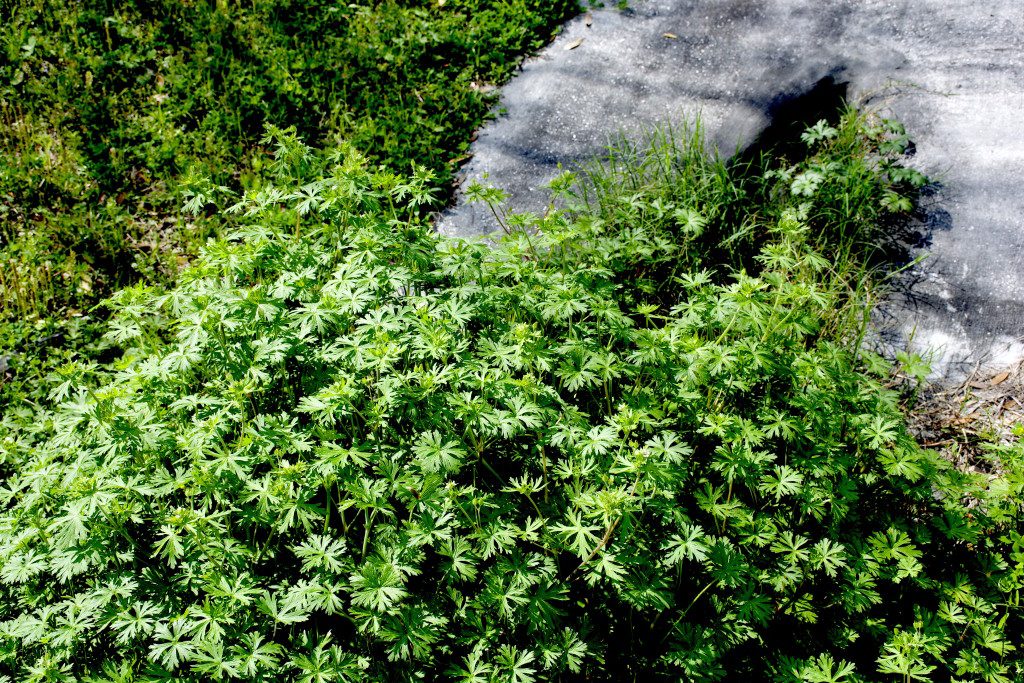
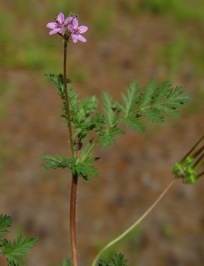
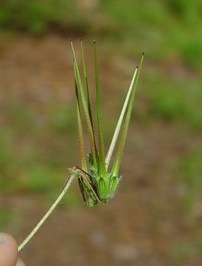
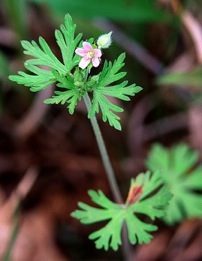
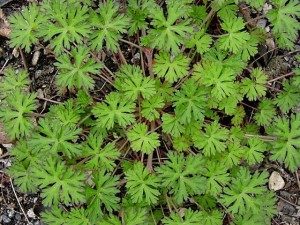

I can’t believe I didn’t see this article before. This plant grows almost year round where I live. I will have to experiment with it.
Can you eat the Stork Bill’s seeds? You said they are full of Vitamin K .Please send your reply to my email address .
Karlene
Yes but…. all things in moderation.
You could use them ground up as a poultice for bruises. K helps to bring bruising down.
I thought last pic was Carolina Geranium…to me looks so similar
Duh !!! Should have read entire newsletter. Never mind (in Gilda Radner voice) .
The relevant paragraph in Greek is (regarding Erodium cicutarium) “the young leaves are eaten raw or cooked (like any herb.) Harvesting is done in the spring before flowering. It is delicious and nutritious. Added to salads, sandwiches, soups, etc. are The shoots can be eaten like asparagus. The root is eaten and used in chewing like chewing gum.
What about the little black berries that grow on it?when do you know when to harvest them? What are they supposed to taste like?
If the seeds were considered edible I would have mentioned it. As far as I know the seeds are not eaten.
But you did mention the seeds. You said, “The seeds are also loaded with vitamin K…”. Now I’m a little confused. I have never seen black ‘berries’ or seeds on the Erodium cicutarium. I see seed pods, and dry empty coverings of the seed pods. But I’ve not seen the seeds yet.
By the way, thank you sooo much for the phonetic spellings for the latin/greek pronunciation. It helps me a lot!
Erodium species do NOT have berries. Seeds, yes. Berries, no.
WHAT “little black berries”!?
Filarees have NO berries!
BE CAREFUL!!!
Filarees / Erodium Identified:
http://ipm.ucanr.edu/PMG/WEEDS/filarees.html
We have this growing all over our hills as a weed. I only learned to identify it this year. It came up on a list of plants we have. It’s interesting to think what else we have all around us that could be more useful than we think.
I am confused as to what it is that we have; Erodium circutarium, or Geranium carolinianum, or if it matters. Are they the same? Ours looks like the pictures on top and middle right.
Scroll down on this page & click on the thumbnail pictures to enlarge them, so you can better see what the parts of this plant look like: https://www.wildflower.org/gallery/species.php?id_plant=geca5
Compare that plant to these: two Filarees (Erodium spp.) http://www.ipm.ucdavis.edu/PMG/WEEDS/filarees.html
What useful, fun, and relevant information! Thank you.
Thank you Dean!!! You saved my life!!! Had what I believed was Carolina geranium and planned to tincture it next year…I was convinced it was geranium until I read your post “WITH EMPHASIS” about distinguishing hairy vs smooth stem. Mine was indeed smooth, hence = sneaky poison hemlock. MANY THANKS for being my “go to” for last 11 years. Your website is a valuable lifesaver!
Cicuta spp. are known as “water hemlock”. Conium maculatum is “poison hemlock”. Both are deadly and are often mistaken for edible plants such as carrots and parsley. Just having a smooth stem is not an indicator of a poisonous member of the parsley family (anise, fennel, parsley, celery, dill, et al.)
Thanks for the useful tips. I think I’ll revisit stork’s bill, since it appears to have more uses than making “scissors” like my mother showed me as a boy.
Harvested Musky Storksbill from my yard today. Am going to make a tincture with leaves and stems and dry the root for tea. I tried the root raw and it has a pleasant almost nutty flavor.
To me, the leaves of (E. circutarium) have a honey-like after-taste and the boiled root has a potato-like flavor.
Do you have any other information on how to use filaree as a dye? I’ve done a light search and haven’t found any additional direction, such as boiling or soaking.
I just finished eating a delicious dish of sauteed filaree with onions and garlic thanks to this site and comments. My entire yard is filled with it. It’s a pain in the summer with the corkscrew seeds but I’m getting my vengeance today.
I’ve
Thanks for finally talking about > Stork’s Bill, Cranesbill – Eat
The Weeds and other things, too < Loved it!